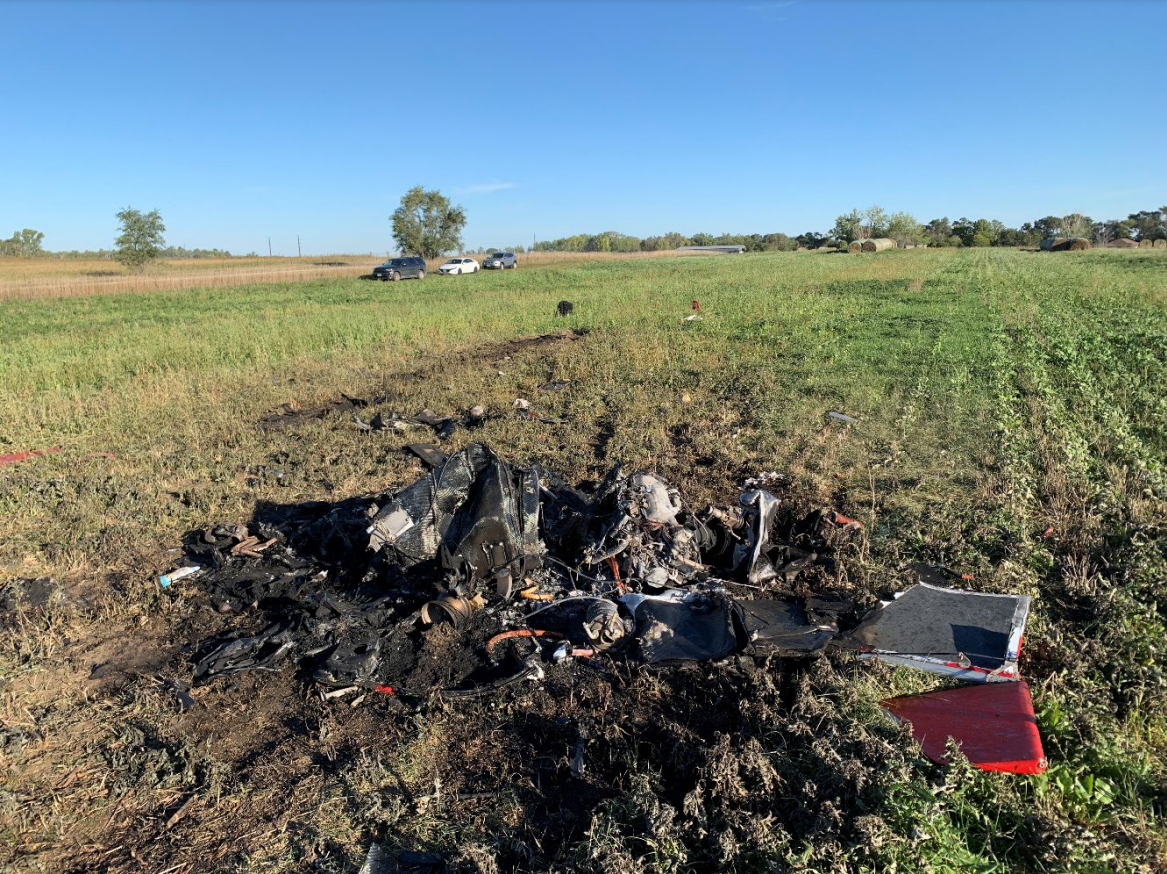
ASN Wikibase Occurrence # 283793
This information is added by users of ASN. Neither ASN nor the Flight Safety Foundation are responsible for the completeness or correctness of this information.
If you feel this information is incomplete or incorrect, you can submit corrected information.
| Date: | Tuesday 27 September 2022 |
| Time: | 10:15 |
| Type: | Airgyro Aviation AG-915 Spartan |
| Owner/operator: | Limited Gyroplanes LLC |
| Registration: | N499AG |
| MSN: | MC.L.21.P.1.G.15.A |
| Year of manufacture: | 2022 |
| Fatalities: | Fatalities: 1 / Occupants: 1 |
| Aircraft damage: | Destroyed |
| Category: | Accident |
| Location: | near Yankton, SD -
 United States of America United States of America
|
| Phase: | Initial climb |
| Nature: | Test |
| Departure airport: | Yankton-Chan Gurney Airport, SD (YKN/KYKN) |
| Yankton-Chan Gurney Airport, SD (YKN/KYKN) | |
| Investigating agency: | NTSB |
| Confidence Rating: |
On September 27, 2022, about 1015 central daylight time, an Airgyro AG915 Spartan gyroplane, N499AG, was destroyed when it was involved in an accident near Yankton, South Dakota. The pilot sustained fatal injuries. The gyroplane was operated as a Title 14 Code of Federal Regulations Part 91 flight test.
The pilot built the experimental gyroplane and was in the process of achieving the required 40 flight test hours. The maintenance records showed that the gyroplane had accumulated 37.8 flight hours before the accident. The gyroplane departed from the airport and two witnesses observed black smoke emitting from the gyroplane while it was flying. Neither witness observed fire emitting from the gyroplane while in-flight. The gyroplane impacted a grass field. The wreckage, which was destroyed, sustained extensive thermal damage.
Examination of the wreckage revealed that an in-flight fire had occurred. Several sections of the fuselage, empennage, and the main rotor mast were found a significant distance from the impact point. The sections exhibited signs of thermal damage that did not appear to be related to a postimpact fire. In addition to the thermal damage, there was also evidence of fluid consistent with oil on both the interior and exterior of several fuselage and empennage pieces. The fluid on the exterior surfaces appeared in airflow-driven patterns, indicating that the fluid leak occurred in flight.
Evidence showed that the in-flight fire had originated from the compartment where the experimental engine was housed. Two aluminum valve covers (cylinders Nos.2 and 4) collocated on the engine were melted along the bottom edge of the covers with evidence of dripping and material flow. The flow direction of the melted areas indicated that the material was in an upright (in-flight position) at the time the material started to flow and is inconsistent with postimpact fire damage.
The fire fuel source appeared to be leaking oil from the governor pad. The engine had oil coating over a large area of the exposed surfaces. Oil was found on several sections of the fuselage and the empennage, including sections located away from the area of impact and postimpact fire. A governor had not been installed on the governor pad and the governor flange cover was still in place. The still-installed governor pad was heavily coated in oil, with an area of coagulated oil directly beneath the pad.
With the governor flange cover installed, oil leaked from the governor pad and likely ignited at the turbocharger exhaust duct. An in-flight fire occurred that produced the black smoke that the two witnesses observed. It is likely that the pilot lost control in flight with the engine fire, and subsequently impacted terrain.
Contributing to the accident was the improper build process by the pilot. The engine installation manual states that the governor flange cover is for engine transportation only and not for flight operations. Additionally, the governor flange cover must be replaced with a functional governor, or the engine is to be converted to a different version per a service document from the engine manufacturer. It is likely that the pilot did not fully reference and understand the engine installation manual and the service document during the build process, and thus flew the gyroplane with the governor flange cover installed, which eventually leaked oil and resulted in an in-flight fire.
Probable Cause: A loss of control while an in-flight fire occurred, which resulted in an impact with terrain. Contributing to the accident was the pilot/builder’s improper engine build procedures.
Accident investigation:
 |
|
Sources:
https://www.dakotanewsnow.com/2022/09/27/1-dead-helicopter-crash-near-yankton/
https://hubcityradio.com/plane-crash-reported-near-the-yankton-area/
https://data.ntsb.gov/Docket?ProjectID=106005
https://registry.faa.gov/AircraftInquiry/Search/NNumberResult?nNumberTxt=499AG
https://www.yankton.net/community/article_2c03ee5e-3e7e-11ed-bdab-a3b77e34400d.html
Location
Images:

Photo: NTSB
Media:
NTSB investigating today’s crash of an Airgyro Aviation AG-915 Spartan gyrocopter in Yankton, South Dakota.
— NTSB Newsroom (@NTSB_Newsroom) September 27, 2022
Revision history:
| Date/time | Contributor | Updates |
|---|---|---|
| 27-Sep-2022 17:46 | Captain Adam | Added |
| 28-Sep-2022 13:47 | AgOps | Updated [Time, Registration, Cn, Operator, Phase, Nature, Source, Embed code, Narrative] |
| 04-Oct-2022 19:24 | Captain Adam | Updated [Time, Departure airport, Destination airport, Source, Narrative, Category] |
| 21-Mar-2024 09:49 | Captain Adam | Updated [Time, Nature, Source, Narrative, Accident report, Photo] |
Corrections or additions? ... Edit this accident description
The Aviation Safety Network is an exclusive service provided by:


 ©2024 Flight Safety Foundation
©2024 Flight Safety Foundation